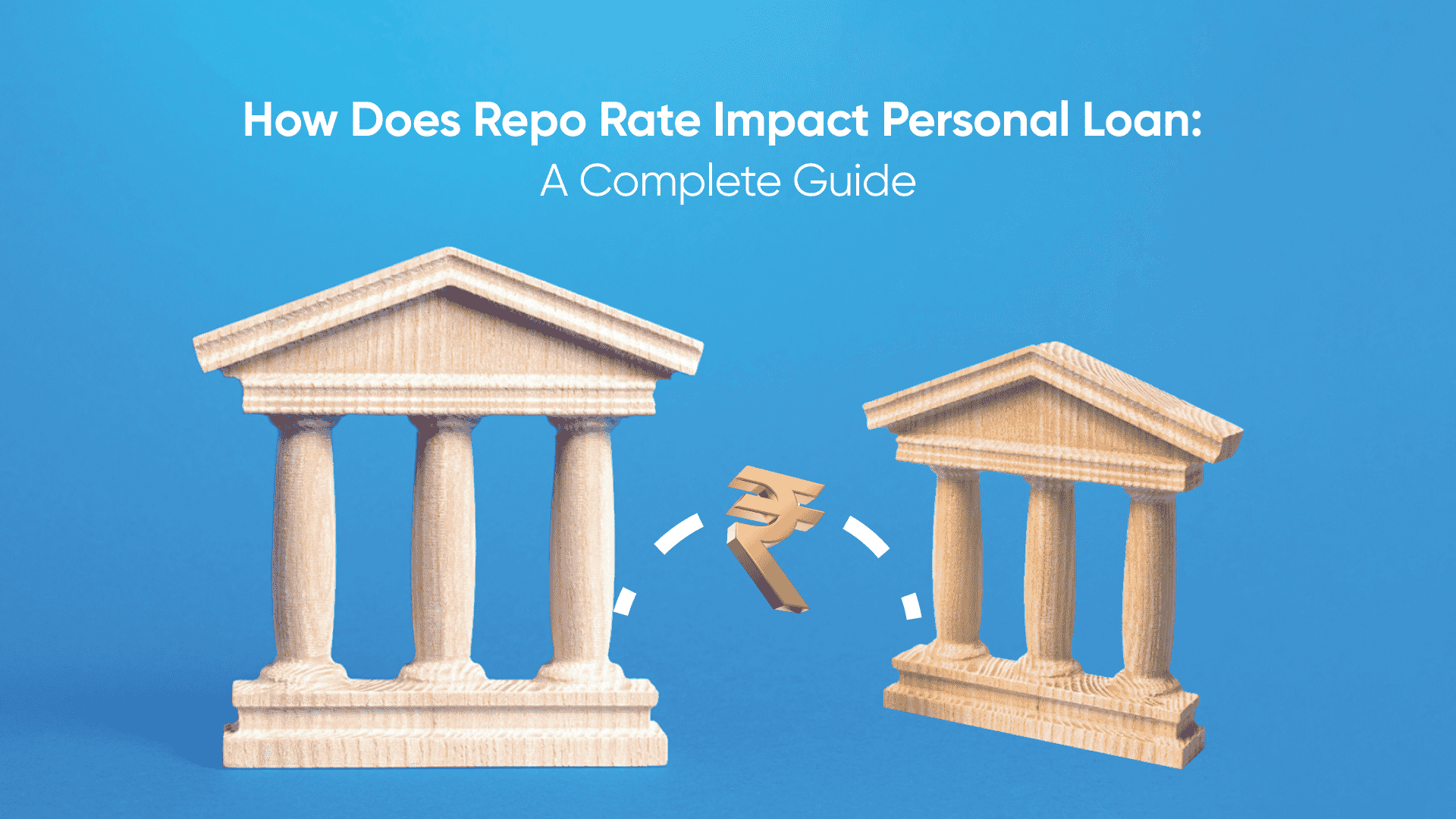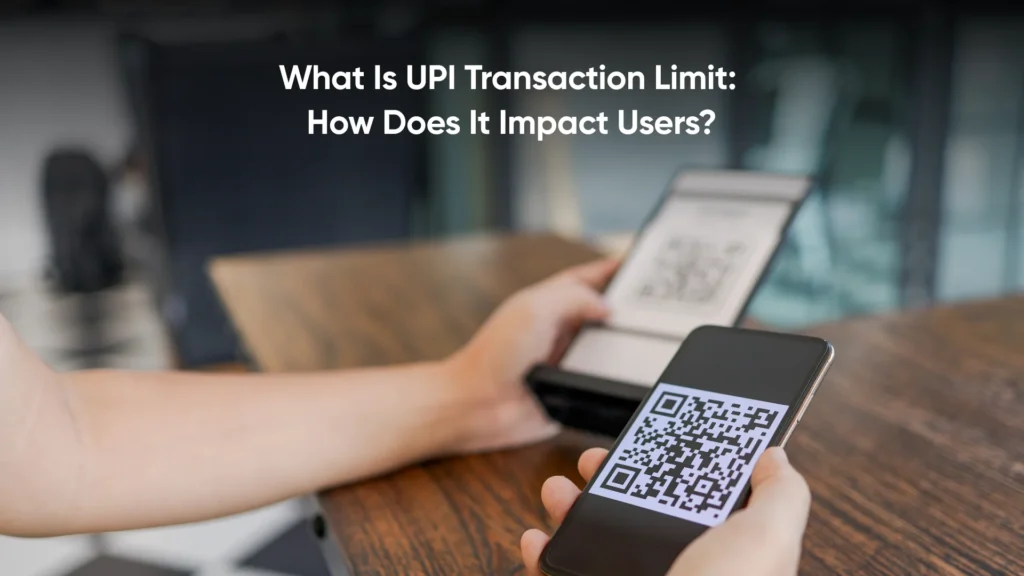How Does Repo Rate Impact Personal Loan: A Complete Guide

Various factors affect and influence loan terms which is important for borrowers before getting a personal loan. One such factor is the repo rate. This has a significant role in determining the interest rates on urgent personal loan. This article will take you to the details of how the repo rate affects personal loans and how understanding about the repo rate will help you to make a wise choice.
Table of Contents
ToggleUnderstanding Repo Rate: Definition and Mechanism
When you borrow money, you pay an interest rate. Similarly, when commercial banks borrow from the Reserve Bank of India (RBI), they pay an interest rate called the repo rate, which is set by the RBI. If the repo rate increases, it leads to higher interest rates on personal loans, instant online loans, and credit, making borrowing more expensive and reducing consumer spending and business investment, which helps control inflation. When the repo rate decreases, borrowing becomes cheaper, encouraging banks to lend more and boosting economic activity. The repo rate helps the RBI manage inflation and maintain economic stability.
Relationship Between Repo Rate and Personal Loan Interest Rates
The repo rate influences personal loan interest rates, which decide the cost of borrowing for consumers. Repo rate increases impact borrowing costs which ultimately leads to high interest loans, including personal loans. This leads to borrowers paying higher EMIs (Equated Monthly Installments) for personal loans they take. Similarly, decrease in repo rate can reduce the personal loan interest rates making personal loans more affordable, encouraging borrowing and spending. The repo rate acts as a tool for the RBI to influence overall economic conditions, and changes in the repo rate directly impact personal loan interest rates, affecting both borrowing costs and consumer spending.
Also Read: Repo Rate vs Reverse Repo Rate: Know Differences
How Changes in Repo Rate Affect Personal Loan EMI
EMIs for personal loans will be directly impacted by changes in the repo rate. Higher borrowing costs for the bank ultimately result in higher interest rates for personal loans, which impacts consumers. Therefore, borrowers’ EMIs will be greater. Higher EMI amounts may make it difficult for borrowers to get loans. Similarly, when there is a repo rate decrease, borrowers get lower interest rates on personal loans. Because of this decrease, borrowers’ EMIs are lowered, which lowers the cost of borrowing. As a result, changes in the repo rate have a direct impact on how much borrowers must pay each month for personal loans.
Factors Affecting the Repo Rate to Impact Personal Loan
The RBI who decides the repo rate at regular intervals manages liquidity and controls inflation. Any changes in repo rate directly impact commercial banks and financial institutions. This in turn leads to banks revising their interest rates, thereby impacting personal loans. If you plan on taking or have already taken any personal loan, it is important to keep track of the repo rate since it will significantly impact the EMI one pays. We have mentioned a few key factors that affect repo rate which in turn impact personal loans:
- Monetary Policy: Monetary policy is the policy used by RBI to manage economic growth and stability. A higher repo rate can control inflation and the economy, while lower repo rate can increase borrowing by making loans cheaper.
- Inflation: Inflation in India affects the repo rate.High Inflation leads to higher repo rate set by RBI and lower inflation can lead to reduced repo rates.
- Economic Conditions: When the economy weakens, RBI lowers the repo rate to encourage the borrowing, which in fact affects the personal loan interest rates as well.
- Global Factors: Global factors like international economic trends, geopolitical events, can influence the market conditions. According to this, RBI will adjust the repo rate to keep the economy stable and adjust fair interest rates for personal loans.
- Liquidity in the Financial System: When there is a shortage of liquidity, the RBI might raise the repo rate to control money supply and stabilise the banking sector. On the other hand, ample liquidity can also lead to lower repo rates, which can decrease personal loan interest rates and make borrowing more affordable.
What Happens When Repo Rate Increases?
Increasing the repo rate impacts several factors in the economy as follows:
- Inflation Control: The RBI controls inflation by limiting the money supply in the economy. Thus, they increase the repo rate.
- Repo rate increases impact banks which in turn discourage them from borrowing money from the RBI.
- Interest rates on loans: Increasing repo rates makes banks increase their interest rates on loans as well. This leads to higher EMIs on personal loans.
- Investments in Fixed Deposits: Investments like Fixed Deposits (FDs) and savings give higher returns as an increased repo rate leads to higher interest rates. This may also lead to increased demand for FDs
- Impacts Mutual Funds: A higher repo rate impacts mutual funds, especially debt mutual funds. Since less capital is available in the market, stocks and mutual funds get negatively impacted when the repo rate rises.
How Repo Rate Affects the Indian Economy?
Repo rate is revised regularly by the RBI to maintain liquidity and control inflation in our country.
Increase in Repo Rate: To curb inflation, RBI increases the repo rate. This makes borrowing capital expensive for commercial banks and financial institutions. This slows down the capital flow in the economy and people may purchase limited goods and services. This affects the demand – supply chain. Although it impacts growth in the economy, it helps to control inflation.
Decrease in Repo Rate: Repo rate is decreased to improve liquidity in the economy. Banks can lend money at lower interest rates. This repo rate decrease benefits borrowers by making loans cheaper. This encourages borrowing and more investments. It also leads to an increase in spending on goods, leading to economic growth.
Benefits of Keeping Track of Repo Rate for Personal Loan Borrowers
For personal loan borrowers, keeping track of the repo rate is essential as it directly impacts interest rates set by banks and financial institutions. When the central bank increases the repo rate, borrowing costs rise, leading to higher loan EMIs. Conversely, a decrease in the repo rate often results in lower interest rates, making loans more affordable. By staying informed, borrowers can strategically time their loan applications, refinancing, or repayments to benefit from favorable rates. Additionally, it helps in understanding broader economic trends, enabling borrowers to plan their finances more effectively and manage loan repayment burdens.
Conclusion
The repo rate is required to manage the economy. The changes in the repo rate by the RBI affect how much banks can pay for borrowing money, ultimately affecting the interest rates on personal loans for the common man. Understanding the repo rate will help you as a borrower to be informed about the borrowing costs that may impact your finances.
Frequently Asked Questions
An interest rate hike will increase borrowing costs, raising EMIs for loans, including personal, home, and auto loans. It may also impact savings account interest and overall inflation.
As of 7th June 2024, RBI has kept the repo rate unchanged at 6.5%
Repo rate increases impact common man influencing loans and interest rates.This in turn affects demand and slows the growth.
When the repo rate increases, banks may increase interest rates. If one has taken a personal loan, interest rates may also increase for existing and new borrowers alike.
The current repo rate, as fixed by RBI, is at 6.5% as of June 7th, 2024
If the repo rate changes, your EMI amount will also change. For example, if you have taken a loan of 10 lakhs for 5 years at an 8% interest rate, and the repo rate increases to 9%. Your monthly EMI will increase by 481.97 and the new EMI amount will be ₹20758.36.
Pre-paying personal loans during high repo rates may help you decrease loan debt and save on interest costs. However, you need to consider prepayment penalties and the lock-in period of the lender, before you decide to prepay the loan.
The Monetary Policy Committee (MPC) of the RBI (Reserve Bank of India) decides the repo rate and determines it every two months.













